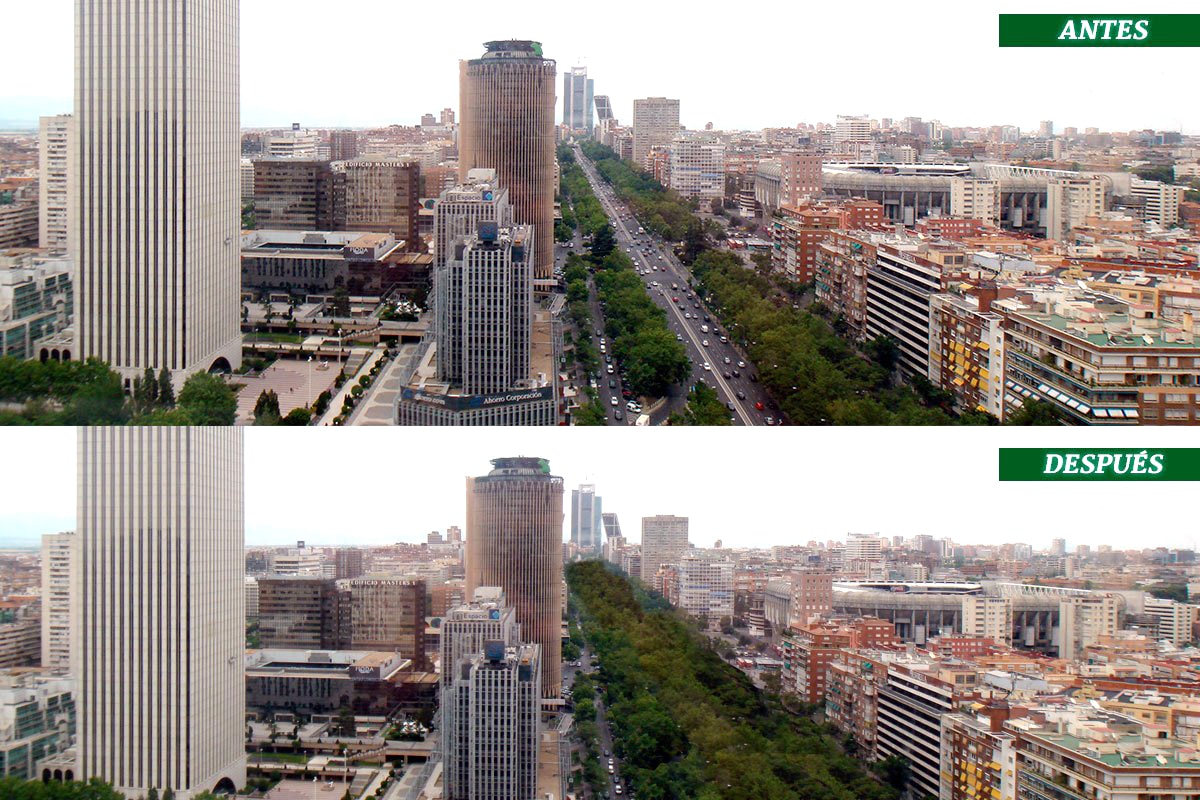Have you ever felt like Michael Douglas in the traffic jam scene in “Falling Down”?
I’m sure you have, especially if you have good taste.
To all of those, especially those who are suffering daily, this uprooting of our daily lives seems incomprehensible.
Your business, due to various reasons, decided to settle in the city center, but perhaps the services it provides do not require this. Of course, the image of the company asks for it. “How can we not be in the centre?” The reality is that ‘being in the center’ is an entelechy. For being in the ‘centre’, you are not the center of attention for your clients, which you should be.
That is to say, the business has assumed (at least until now), that the immense cost of having hundreds of square metres in the centre was necessary. The fact that the workers who work there every day usually don’t live nearby because they can’t afford it is a secondary concern. If their workers, or even their employers, decide to live on the outskirts of the city to avoid the business, they search for more space at a lower cost, yet wish to make up for the price of a greatly increased commute.
This pandemic is giving us some concrete statistics, one of which is a significant reduce in pollution, obviously caused by a reduction in car travel. At least one positive then!
If, in addition, this virus, or those that may come, force us to distance ourselves so as not to fall ill, what immediate conclusion do companies reach?
The first is evident: we cannot pay the same for a few square meters where, for the moment, only half of the people can work. If the landlord does not cut his expenses in half, either we are forced out the center or we close the business. I am mainly talking about offices, but the concept also applies to shops, restaurants, bars, small shops, etc. The difference is that, in these last businesses, the need for its location in the center is justified.
Concretely, when possible, we can reach the conclusion that…
WORK FROM HOME IS HERE TO STAY
Many companies have been promoting this for years. They realised, long before a virus forced their hand, that it was a very efficient and reasonable alternative.
The advantages are evident and many have been rediscovered in the past few months
- We save time on commute
- We save petrol and therefore contribute to a cleaner planet
- Productivity increases with less interactions and distractions
- We no longer need to adhere to the awful office model
However, there are some disadvantages
- We are all humans, with needs for social interaction
- The ease and flexibility of face to face meetings can not accurately be recreated online
- It is not easy to keep yourself organised when home and work life becomes mixed
- If you have young children… there is a whole new set of complications.
And you, after having experienced work from home, Do you prefer it? What advantages and disadvantages have you noticed? Would you like to continue this type of work?
CONSEQUENCES IN THE CITY
One of the problems between urbanism and politics is the times. Our dear politicians take decisions within the confines of their electoral time frame. Urbanisation, however, follows an independent calendar. That being said, the politic has the final say over the city future.

Our cities have accommodated, for the large part, our daily needs.
Not to play city planner, but it seems evident that in view of the desolate streets, if work habits change, the city will be oversized.
So many lanes will no longer be needed. This fact opens the door to the design of urban planners to rehabilitate the city.
Can you imagine the main roads in your city turned into linear parks?

CONSEQUENCES IN THE HOME
All of us who have had the option to start working from home have given it an earnest attempt. We have converted some space in our home into our new office. We did it thinking that it was going to be temporary. But what if it isn’t? What if from now on, whether because the company decides it or we ourselves see that we like it, we stick to it? Is the change worth it?
Well, dear real estate developer, if this does happen (which seems to be highly likely at least in part), you will have to provide a new housing solution.
I would highly recommend reading Javier Molowny’s article, an architect with whom I could not agree more, as well as “The change of mentality”, about choosing a living place in times of Covid-19.
Nowadays, customers are going to search for real estate with two things in mind:
- a good working environment
- and spacious living and fresh air.
While the second may be harder to find, the first isn’t.
Other demographic tendencies that influence the distribution of a home include the number of children. That is to say, it is not an excuse to think that a work area is simply a superficial area. What also will not do, is to think that an 8-10 meter squared bedroom will be the new “work space”. That would be a solution for the present. But, if you want to be innovative, you must rethink with your architect what that new space should be like in the future. Of course, legislators will also need to do their job on regulatory issues. This change affects us all.
As excellently explained by Javier Molowny in his article, homes need to be flexible. If they are, we will have innovated.
Think about the “living history” of your parents. Yes, even things like that have a history. In their generation, families were much larger, with far more children. When these children grew up and moved out, the home was much too large for just them. With all these extra rooms, if you are flexible and creative, you can expand your living room to entertain more guests, which increases its appeal as you get older. This is only one example, but shows how the opportunities are endless.
WHAT WILL THIS NEW MODEL OF HOME AND WORK LOOK LIKE?
Firstly, the study or office will be well lit, surely closer to the sleeping area than to the living room and kitchen. Why? Because you need silence, and make the clear distinction that when you leave the studio, you go home. Those meters of distance will do the work of disconnection that your commute used to do, and so on.
Furthermore, you will not have to use extension cords (as most of us had to for our last minute home office), you will have all the best facilities. I even think it would be advisable for that room to have extra acoustic insulation, as we want to maintain the professional atmosphere, away from the family.
On top of this, it is evident that an architect and businessperson do not have the same needs for space, work plan or warehouse. Good lighting and ventilation conditions are assumed here, but good views to the outside are also important for a good state of mind. Yet another suggestion may be a proposal for convertible furniture, to make the use of the studio more flexible.
When you client sees that you have taken into consideration their needs, you will start to gain their trust, as demonstrated by Javier Consuegra’s post about the sales process in a sports store. If you ask the right questions to your client, you will have a much more personalised experience and therefore higher chances of closing the deal, whether that be for sneakers or a house.
On top of all the aspects of a new proposal, you have to speak with you architect, but when you have your realistic and efficient proposal ready…
HOW DO YOU ADEQUATELY EXPLAIN ALL YOUR IDEAS?
It is not always easy to show a home, especially when showing something new. The key rule is to convey confidence. While it may change, the standard idea is that your client is searching for an apartment with X bedrooms. Your job here is to make it easy for them. Explain the advantages of your proposal. It won’t be enough to simply tell them that this bedroom is actually a study. You will have to convince them with your understanding of their needs.
The reality is that :
people believe what they see, and what they believe in, they want.
So, what they want, you can sell, and they can in turn buy.
And this is where we come in. ;)
Through high quality IMAGES and VIDEOS, your client will be completely immersed in their possible future home. Because of our isolation, you have likely already had the chance to experiment transforming workspaces in your home, and you now better know the needs of the clients, and particularly what has been lacking in the past.
Seeing your projects finished gives the potential buyer a sense of confidence. They can imagine it because they can see it, and they can see whether it is truly what they were envisioning.
360º IMAGES are furthermore likely to strengthen their conviction, as they can interact with them, and move within the space, which further diminishes their doubts. This will get them excited for their potential future, and they can already imagine them working there, doing so effectively and ideally.
And that’s it.
We’ve helped you to convince them using the visual tools you required.
Is it possible to still do this without our services? Yes, of course, but at a difference pace, with slower and less effective results.
If our clients can count on our collaboration, it is because they find it profitable and efficient, because it accelerates their process. Concretely, they sell better and quicker, which translates into happiness and prosperity for you.
As my previous article outlined, the new location for your sales pitch…


